Ancient Kopeshwar temple at Khidrapur is a fine example of the impressive architecture and engineering skills of the artisans of the 12th century. The temple is dedicated to Lord Shiva and is renowned for its stunning rock-cut architecture and intricate carvings. As I approached the temple, I was struck by its grandeur and the intricate details of the carvings on the walls and pillars. The temple is also known for its impressive Svarga Mandapa which is a stunning piece of engineering in itself. Join me as I take you on a virtual journey through this awe-inspiring temple and explore the rich history and culture of Khidrapur.
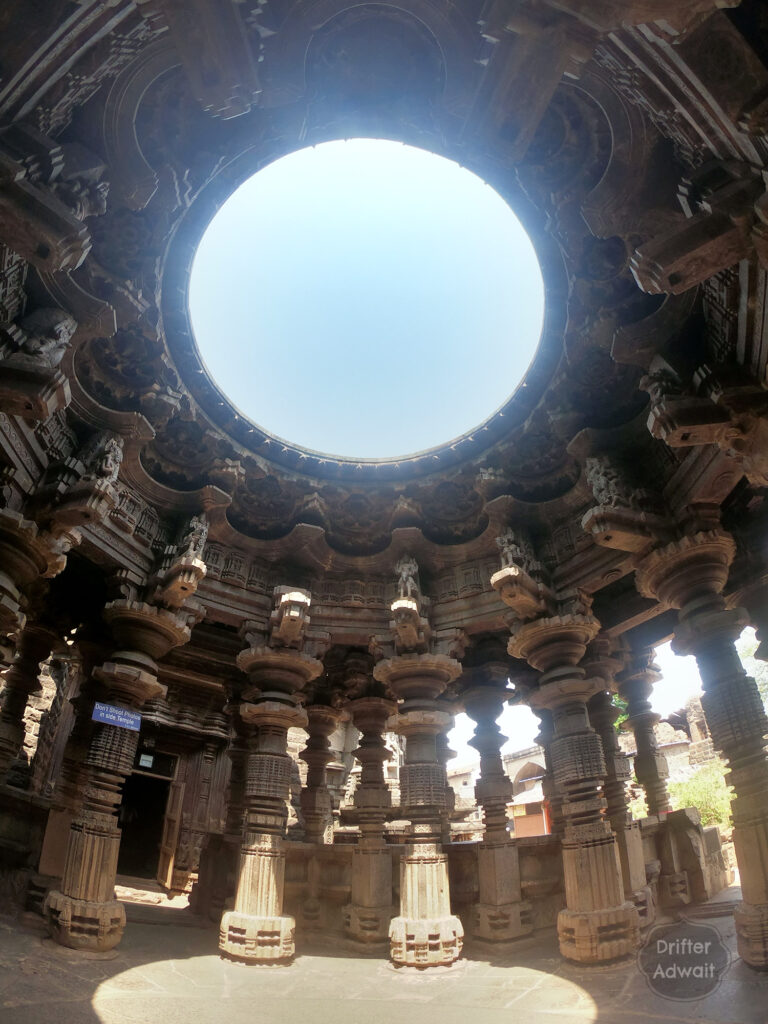
Nrusinhawadi, commonly known as Narsoba-chi-Wadi, is a significant pilgrimage spot for Shri Dattatreya devotees, located in the Kolhapur district of Maharashtra. As per Gurucharitra, Nrusinha Saraswati, a Purna-Avatara of Lord Dattatreya, lived and meditated here for twelve years. Daily, thousands of devotees come here from all corners of India to visit the temple, located at the confluence of two rivers, Krishna and Panchaganga. During the Purnima and on auspicious occasions, devotees flocking to this holy pilgrimage rises to hundreds of thousands.
Devotees arrive here, and after taking a dip in crystal clear waters of ever-flowing Krishna Mai, they have a Darshana of Lord Nrusinha Swami and stay for evening prayers. Many of them decide to stay for a couple of days to spend some peaceful time at this location. Very few choose to explore the nearby villages. Those lucky and curious enough to explore stumble upon one gem of ancient architecture, named Kopeshwar temple, located in the town of Khidrapur, just 19 kilometers south of Nrusinhawadi.
Khidrapur is a calm and peaceful agrarian village that lies on the border of Maharashtra and Karnataka. In medieval times, it was known as Koppam. Khidrapur has an ancient and rich past. The Krishna river, flowing in the southeast direction, takes a sharp turn and starts rushing towards the west for a few km. Our temple lies on that marvelous river bend.
Pauranik Origins of Kopershwar:

King Daksha had 16 daughters, and the youngest one was Sati. She married Shiva by going against the will of her father. After passing a few years, Yaksha decides to perform Yadnya, and he invites all the gods from the heavens, except Shiva and Sati. When Sati knows about this glorious ceremony, she decides to go there.
Shiva tries to make her understand that it’s not right to go to the function if you are not invited, but Sati rejects Shiva, saying she doesn’t need an invitation to go to her own home. Feeling inappropriate, Shiva decides to stay back but sends his Ganas and Nandi accompanying Sati (remember this point).
When Daksha sees his daughter with an army of Ganas, he gets annoyed and starts cursing Shiva at the venue. Gods tried to shut him up, but he continued to hurl mean insults toward Sati about her husband. Being deeply devoted to her husband, Sati gets deeply offended and hurt and jumps into the fire of Yadnya, killing herself.

Few of the Ganas ran and narrated the story to Shiva. Shiva loses his temper and gets angry. Being angry, he beats his dreadlocks on the ground, creating an earthquake. Knowing the devastating effects of Shiva’s anger, Vishnu arrives there to calm down Shiva. In Sanskrit, anger means Kopa. From that day, the place where Shiva expressed his anger was known as Kopeshwar. Here, you will see two Lingams beside each other. One is called Dhopeshwar, representing Lord Vishnu, and another is called Kopeshwar, representing Lord Shiva.
Historical Origins of Khidrapur Temple:
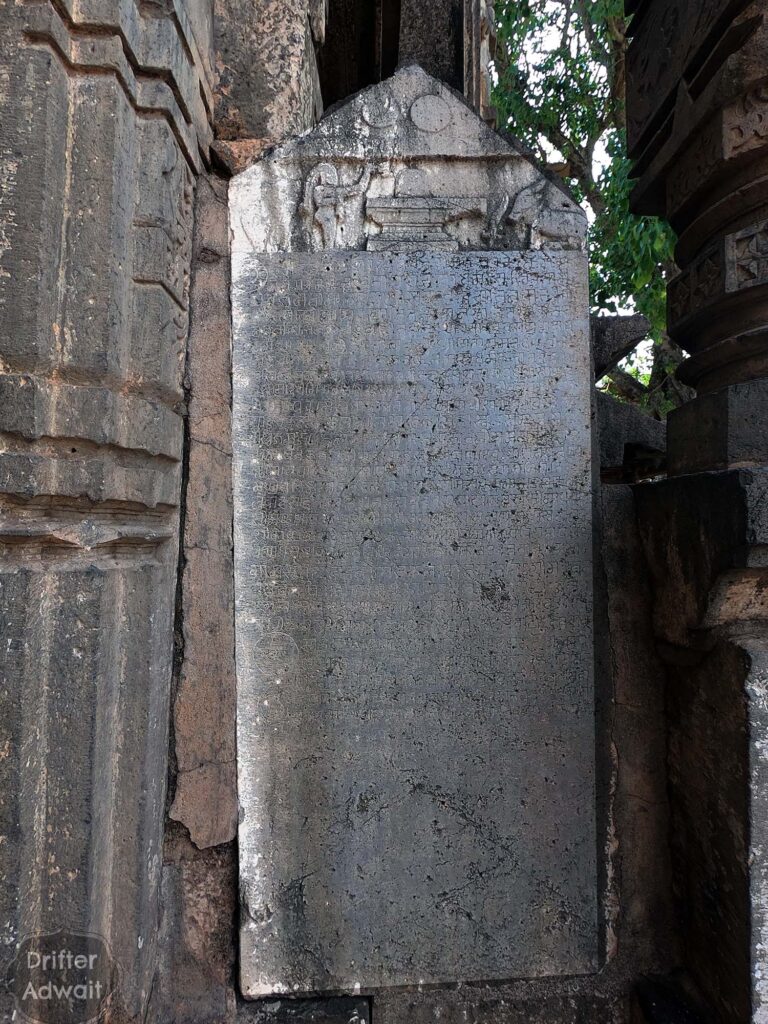
If you can read old manuscripts, you are in a treat, as you will be one of the few people who can read 12 inscriptions scattered across the temple premises. From various inscriptions, we get to know the temple’s history, which goes as follows.
The construction of Kopshwar begins during the reign of Chalukya King Pulakeshi Second in the seventh century. Being a Hindu King, he gave donations to Jains and Buddhist seekers for building their temples. The Famous Meguti Jain temple, located on the hillock of Aihole, was built by none other than Pulakeshi the second.
During his reign, he fought many battles, expanding his territories from the western seas to the eastern seas. During these expansions, while fighting a territorial war with Pallava King Narsimha Varman, this generous King died on the battlefield. It was a devastating blow to the Chalukya Kingdom, and trying to recover from this travesty; the temple construction got delayed.
After that, a small village of Koppam saw many power transfers, from Pallavas to Cholas to Shilaharas, when finally, Yadavas of Devagiri took over the region. Yadava King Singhandeva defeated Shilahara King Bhoja at the beginning of the 13th century. Miraj, Kolhapur, and Panhala fort, along with Koppam, were added to the Yadava territory. In 1213, King Singhandeva restored and completed the Kopeshwar temple construction. You can see this inscription on the south entrance of the temple Mandapa.
This inscription is written in Devanaari alphabets and the Sanskrit language and is considered unique, as King Singhandev has added several titles behind his name. Almost the upper half of the inscription states the titles he had taken. It goes like follows:
“Shirmad Devagara Dhishtith, Samasta Bhuvanashraya, Shri Pruthvivallabh, Maharajadhiraja Vishnu Vanshodbhava, Yadava Kulakamala Kalika, Vikasabhaskar, Samasta Ariray Jagajampa, Ityamevadi Samasta Rajavali Samalankrut Shrimat Pratapa Chakravarti, Shrimaharaj Shri Singhandev.” (phew). And then, it states that the temple was reconstructed on Monday, of Chaitra month, of the year Shaka 1136.
Further, it states, that King Singhandev has allotted the land, trees, earnings of the village Kudal, and village Kudaladamavad (Kurundwad?), located on the confluence of river Krishna, and Bhenasi to the temple. Additionally, King has donated the land till confluence of river Krishna and Kuveni along with villages Siriguppa and Jugul for the Angabhoga and Rangabhoga (Puja, management and for other activities like music) of the Lord Kopeshwar.
Kopeshwar Temple Architecture:
Nagarkhana:

Khidrapur temple was built in Dravida architecture. Located a few hundred meters from the Krishna riverbed, the temple is surrounded by a tall wall and an entrance like a fort. It may be called Nagarkhana, where the drums used to play during the time of Aarti. Keeping Krisha river at your back, when you cross the temple Nagar Khana, you stand in front of one of this temple’s most unique and defining characteristics, a Swargamandapa.
Swarga Mandapa:
Usually, temple have Mandapa, Upamandapa, Antaral, and Garbhagruha. But here, the architect has added a circular Mandapa, called Swarga Mandapa, and it’s the unique feature of this temple, just like the moon roof of the car. There are 48 heavily ornate pillars of Swarga Mandapa, with four entrances in each direction. This unique structure has no ceiling. Blue sky peeks through a circular opening of 13 feet in diameter, illuminating the Mandapa. Exactly below that opening, you will find a circular platform, which is also called Rangashila, the same size that of the space above.
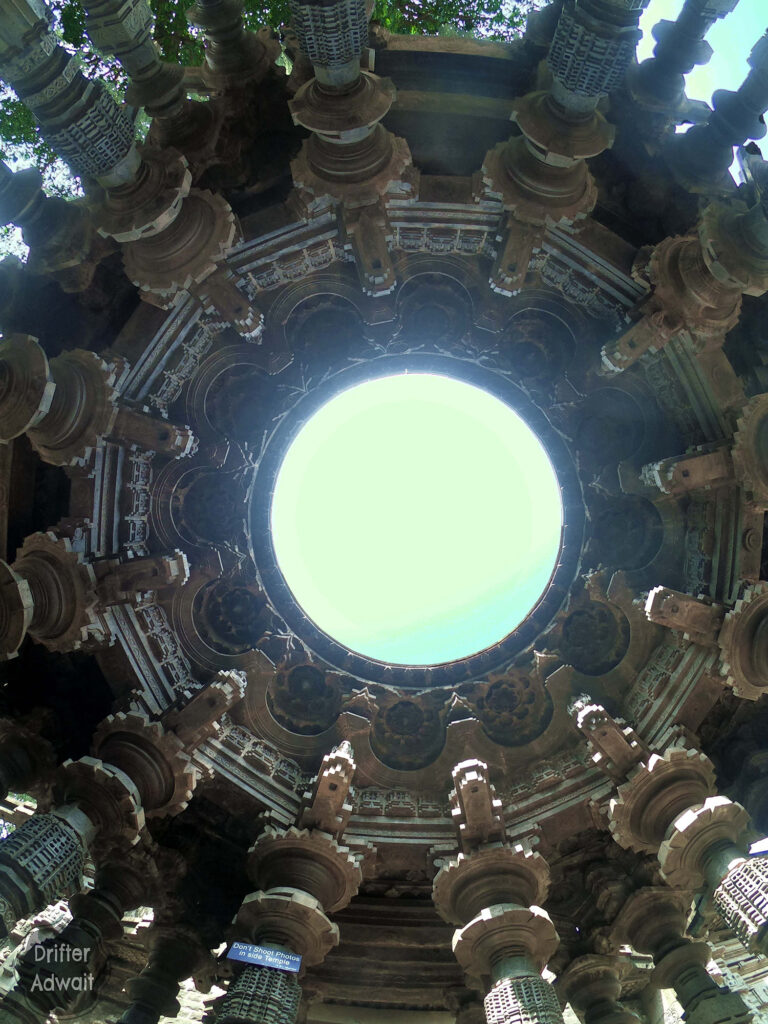
In earlier days, while being on that platform, artists presented their art by singing and dancing in front of the Kopeshwara while the audience was sitting in the space surrounding the Swarga Mandapa. Forty-eight pillars have been divided into three circles surrounding the sky window. The first layer comprises 12 posts encircling the platform; the second is 16, the third circle consists of 12, and the outermost ring is made of eight pillars. Ashta Digpalas and other deities have their consorts and vehicles on top of every post of the first layer surrounding the Ranga Shila. If you stand in the middle of the circle, you will see the blue sky while all the deities bless you.
Many believe, that the roof of the Swarga Madapa has been fallen. But looking at the structure of the surrounding pillars, and the water outlet given besides the Ranga Sheela, we can safely assume, that the Swarga Mandapa has been open since the construction of this temple begun.
Sabha Mandapa:

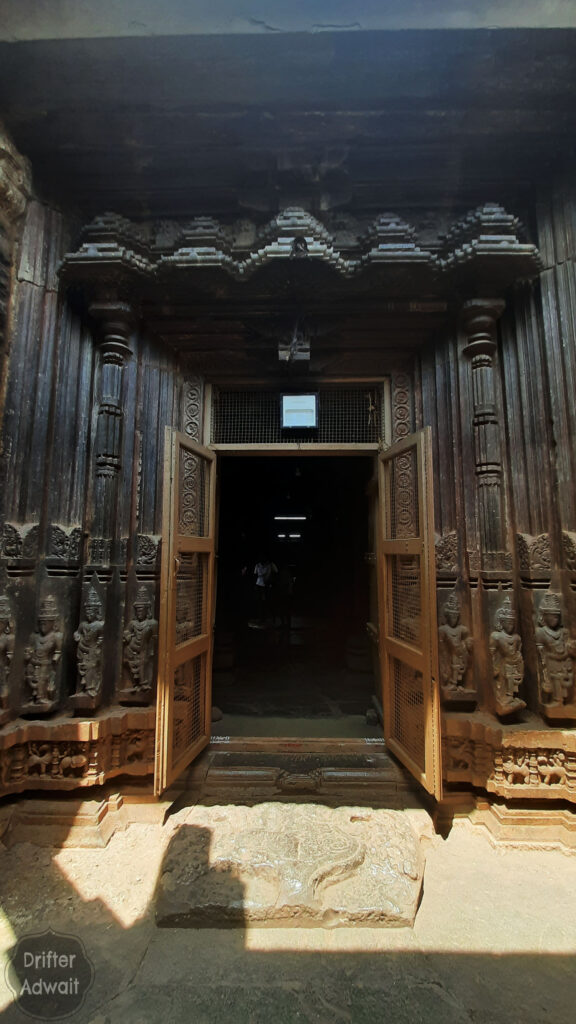
Sabha Mandapa has three entrances, one from the Swarga Mandap and two others from the North and south direction. Each entrance is more beautiful than the other. Every entrance has been ornated with multiple door brackets or, Dwarashakhas. Dwarpaals, both male and female, greet you while you enter the temple Mandapa. The bottom layer of these door brackets is adorned with Shardulas or Vyala animals.
Thirty-six ornated pillars hold over the Mandapa. I guarantee you that you have not seen such beautiful carvings anywhere else in Maharashtra. Here, you will encounter different scenes from Ramayana and Vishnu Purana. Various styles of Keertimukha can be seen here. Looking upwards, you will see a full-blown lotus carved on the ceiling of the Mandapa.

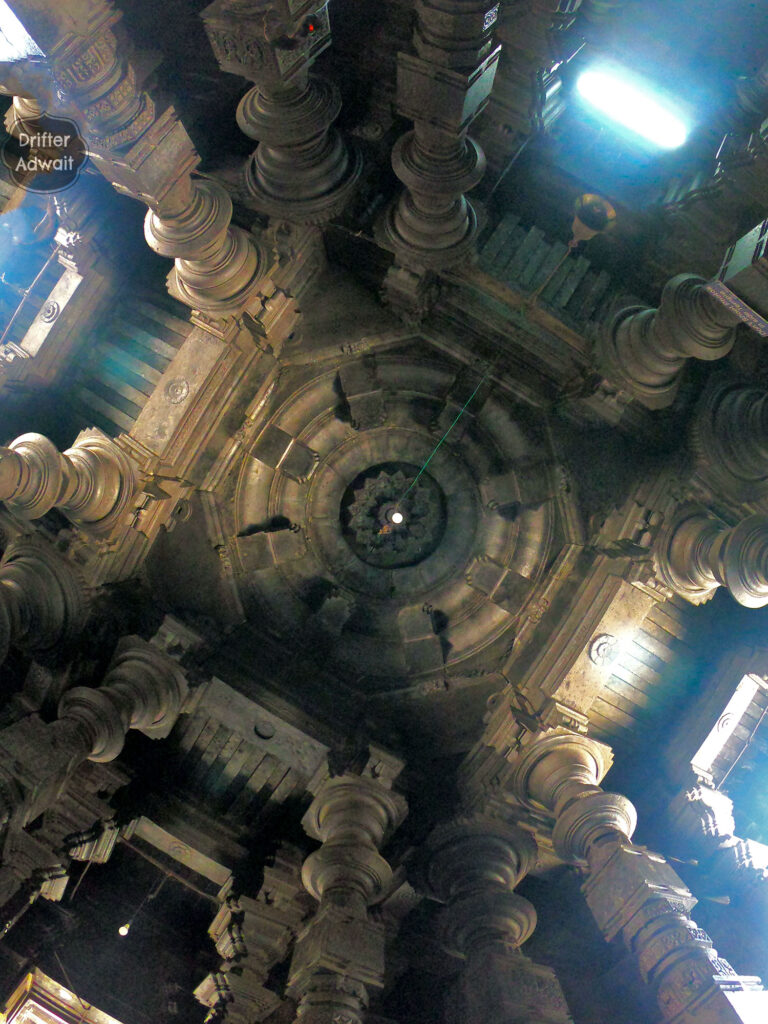
As you cross the Mandapa, you shall reach the Antarala or the passage between Sanctorum and Mandapa; here, two fierce-looking yet beautiful Dwarpalas will greet you. Only one dwarpala is intact, and another is kept outside the temple, near the south entrance. The doorkeeper is wielding a mace, and the carvings on this sculpture are stunning. The statue has managed to carve Rudraksha beads, snakes, rubies, and other ornaments with exquisite delicacy.
As you pass the Antarala, you arrive at the temple’s sanctum sanctorum and third unique characteristic of the temple. Usually, the Sanctorum of the temple is plain and straightforward; you won’t see many carvings in the Garbhagruha. But here, Lord Dhopeshwar (Vishnu) and Lord Kopeshwar (Shiva) are surrounded by the 18 most beautiful girls carrying Puja ingredients.
Outside the Kopeshwar temple:
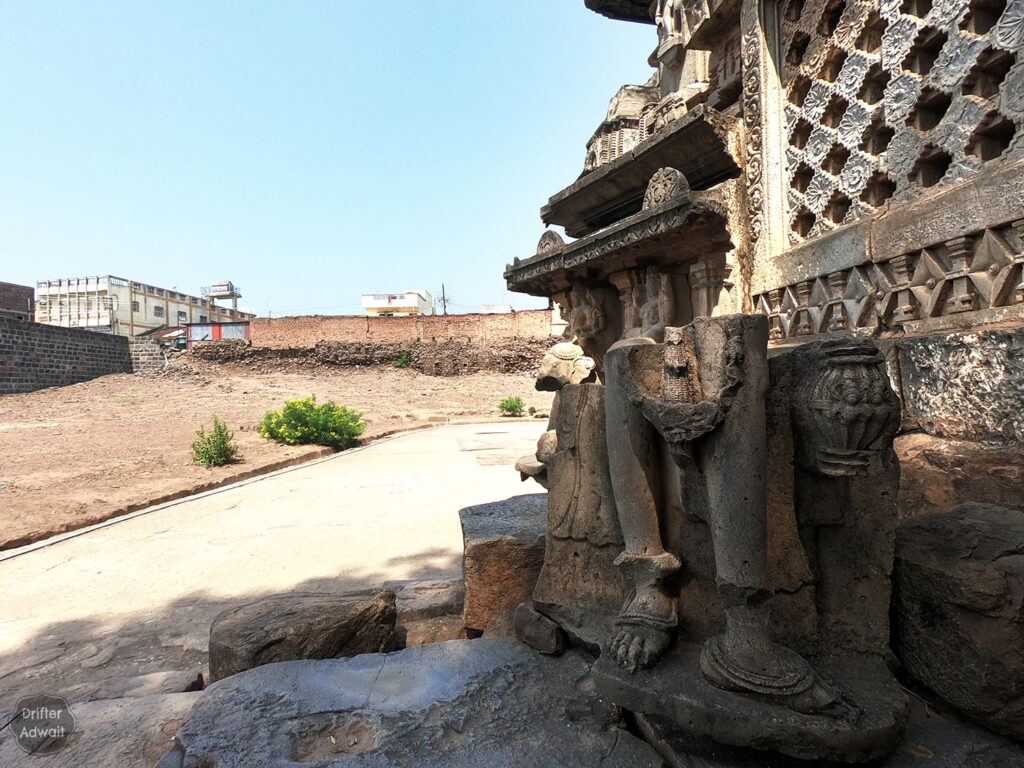
As the temple is built in Dravida-style architecture, you can see the outer layers of the temple. The entire temple is built on a Jagati or a platform. The bottom first layer of the temple is Gaja Thar or an Elephant layer. Temple as the whole is held aloft on these three feet tall, strong animals. This is another unique feature of this temple. Usually, the bottom layer consists of just the animals, but here, the animals have riders on them, and their riders are no ordinary riders, as each one of them is a powerful deity.
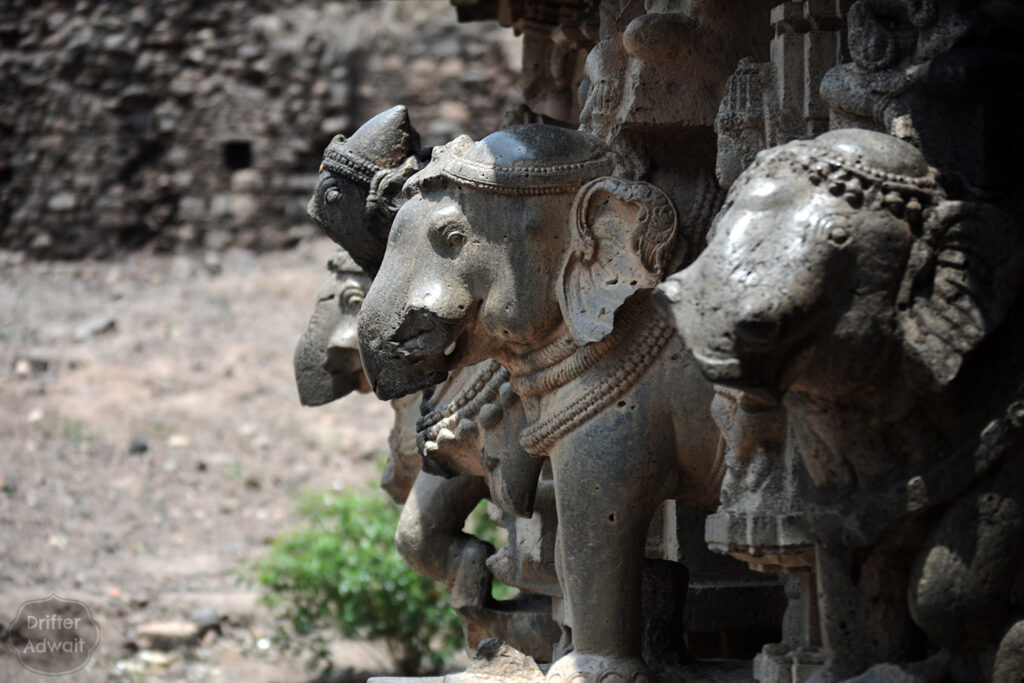
Not to mention, each elephant is different from the other one. Each of them is standing in a different pose, wearing various ornaments, and even the Hauda or the elephant seat is unique. You will find 92 such elephants surrounding and protecting the temple.
On top of the Gaja Thar, there comes the Nara Thar, or layer showing humans living their ordinary life. This layer competes with the layer below in beauty, creativity, and delicateness. On this layer, you will meet beautiful women dancing, playing musical instruments, or even going to the temple, carrying the Puja material along with them. Art reflects contemporary life. On this layer, sculptures have immortalized the social norms, clothing, musical instruments, and traditions. You will find a few deities on that layer after a few mortals. The coating on top of this is decorated with different sculptures of smaller-sized Gods sitting in a cross-legged pose.
There are several temples in the nearby vicinity, which draw much larger crowds. The stunning temples of Badami are just 150 km away from the Khidrapur. So, what makes this temple so unique?
Its resilience. Elephants are considered icons of a stable, protective, and nurturing regime. There are 94 elephants on the outer walls, and invaders ensured that none of them stayed intact. The trunk of every elephant has been put under the hammers. The barbarians who arrived from dessert defaced each divinity, riding on those elephants.
Instead of appreciating the marvelous beauty carved out from the most robust stone, they decided to decimate it because it’s an honor to be called Butshikan and Kufrashikan in their holy book. Waves after waves of invaders came from the north and broke on the temple, yet it stood firm for hundreds of years. You can just imagine how hard and life-threatening it must be for the poor farmers living around the temple to come there and pay their homage to their Lord under the reign of the Sultans. But through the songs, ballads, stories, and traditions, these poor peasants kept the memory of this fine temple and the glorious past alive.
When you stand in the center of that marvelous Swarga Mandapa, do not forget to pay homage to these unknown worriers who shed their blood to defend this temple. Do not forget those grandmothers, who must have painted the pictures through tales in front of her sleeping grandchildren, how Daksha insulted Lord Bholenath and how Veera Bhadra was born. Pay homage to those Brahmins, who must have reached the sanctum Santorum of the temple stealthily and performed Abhisheka on Kopeshwara and Dhopeshwara after clearing the dust, dried leaves, and rubble fell on them. We owe it to all of these unsung warriors; thanks to them, we can see this splendid legacy of our ancestors.
Jai Kopeshwar, Jai Dhopeshwar.
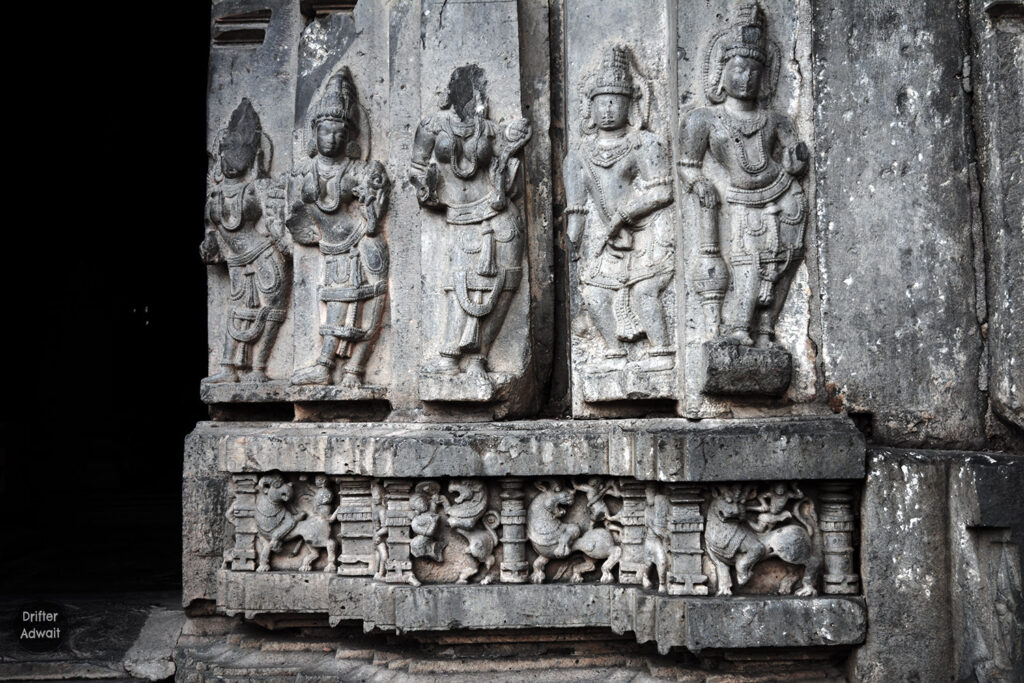
Kopeshwar is indeed an architectural marvel. But there is a lot to this temple that meets the eye. There are lots of narrow corners that are easy to miss. Every pillar is a testament to the ancient sculptor, and hence it is imperative to understand every part of this architectural gem. Do not forget to hire a guide as a local Guide service is available on the temple premises. We met a gentleman named Shashank Salunkhe, an MTDC-approved guide and a P.H.D. student is working on his thesis on the temple Sura Sundari (beautiful ladies of the temples).
Mr. Shashank Ramchandra Chothe 8888005889
Mr. Ramachandra Govind Chothe 9881258188
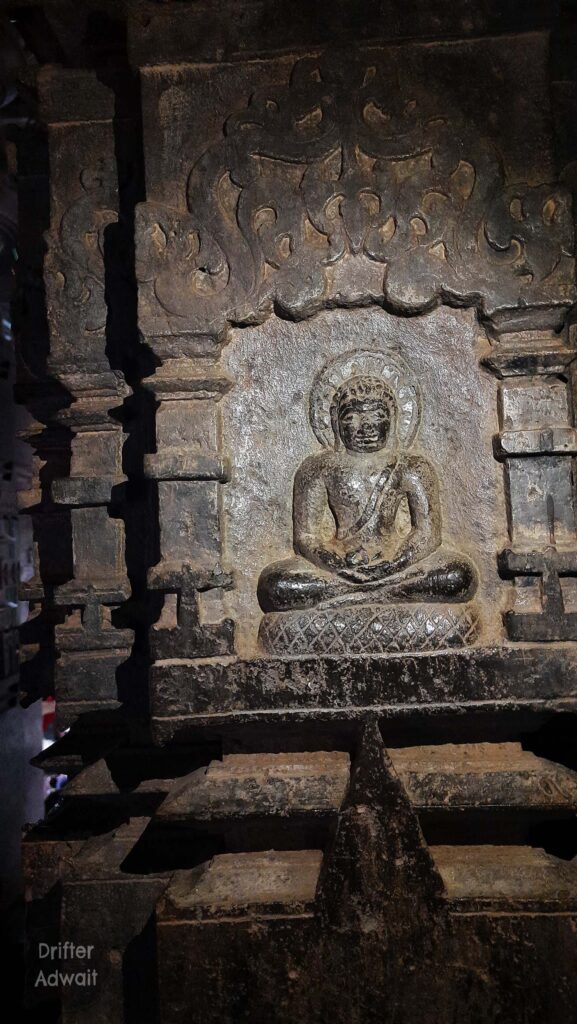
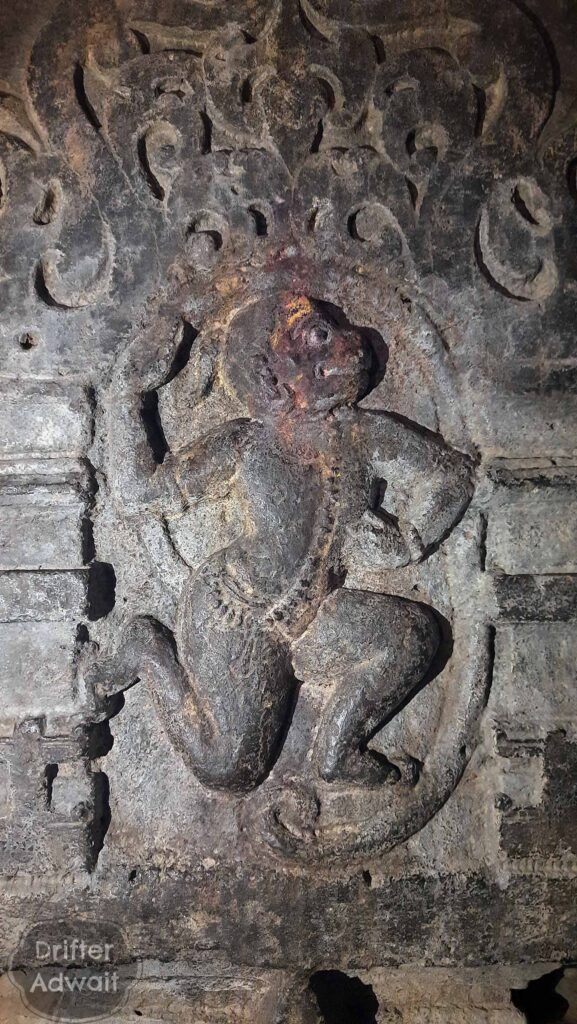
How to reach Kopeshwar Temple, Khidrapur:
? By Car: Khidrapur is about 60 km from Kolhapur, 40 km from Sangli, and 30 km from Jaisingpur. It’s about 50 km away from NH48 and just 20 km away from Narsoba Wadi.
? By Bus: Sangli, Kolhapur, Jaisingpur, and Narsoba Wadi are well connected with MSRTC buses.
? By Train: The nearest railway station is Jaisingpur, about 30 km away from Khidrapur. Another railway station in Sangli, where you will find more trains.
✈️ By Air: Kolhapur is the nearest airport; however, there might not be many flights going to Kolhapur. Pune is the nearest airport to Khidrapur temple.
?️ Places to eat at Khidrapur: Being a small village, Khidrapur has no hotels, except couple of fast food carts serving Pav Bhaji and Bhel Puri outside the temple. Mostly surrounded by the lush green sugarcane fields, you can enjoy the freshly squeezed sugarcane juice, the freshest you will ever have. Narsoba Wadi is the better choice for food, not to mention world famous Basundi is something that should not be missed at any cost. Best option will be going to Kolhapur or Sangli for lunch or dinner.
?️ Places to Stay at Khidrapur: Khidrapur has no place to stay. For basic accommodation, you can stay at Narsoba Wadi as it has both hotels, and Dharmashalas as well. Sangli, Kolhapur or Miraj will be the best choice if you decide to stay, as even five starred hotels are available there to cater you.
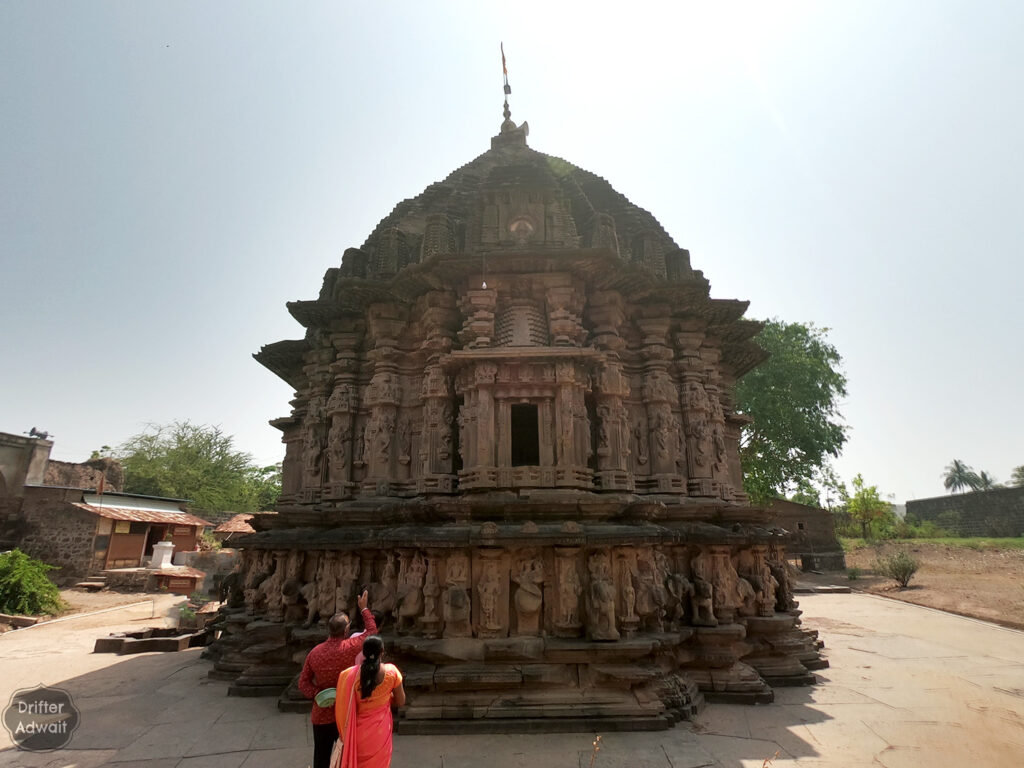

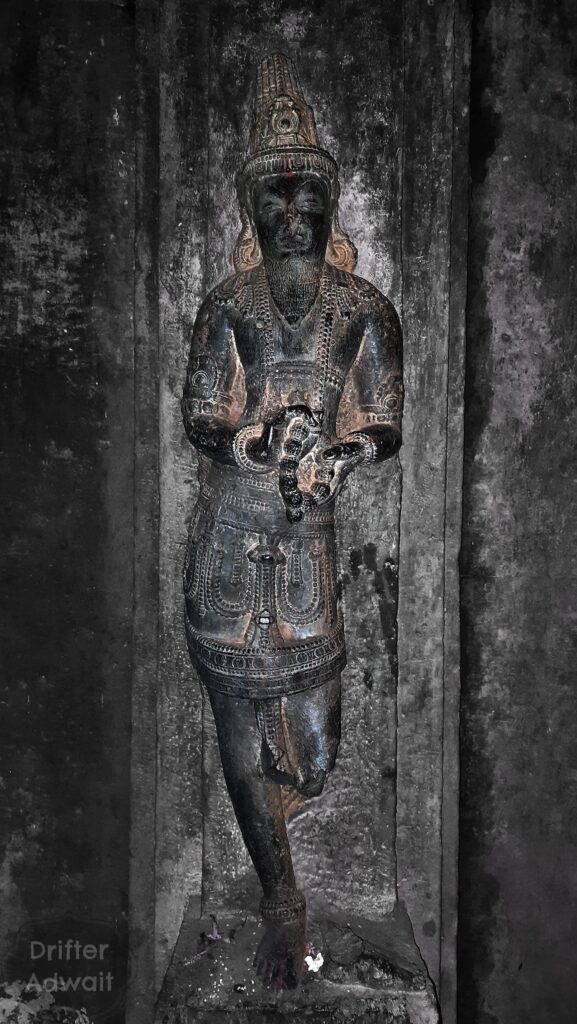
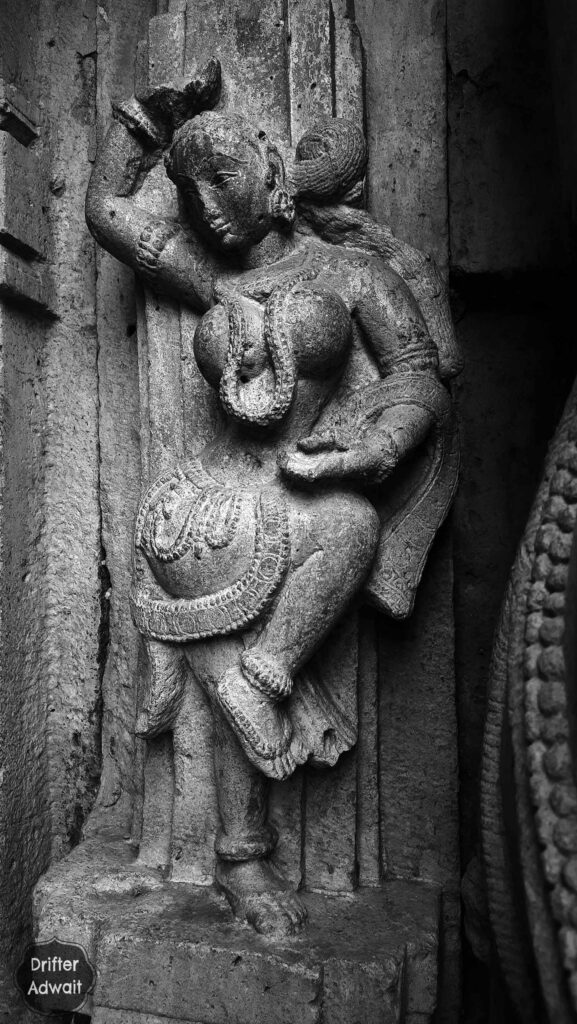
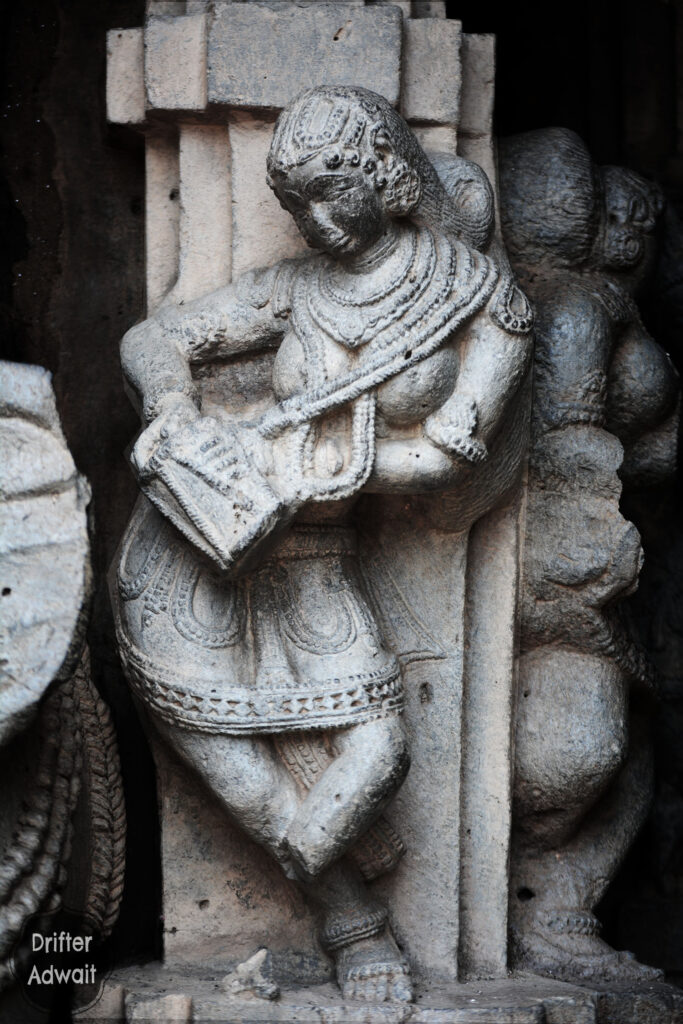
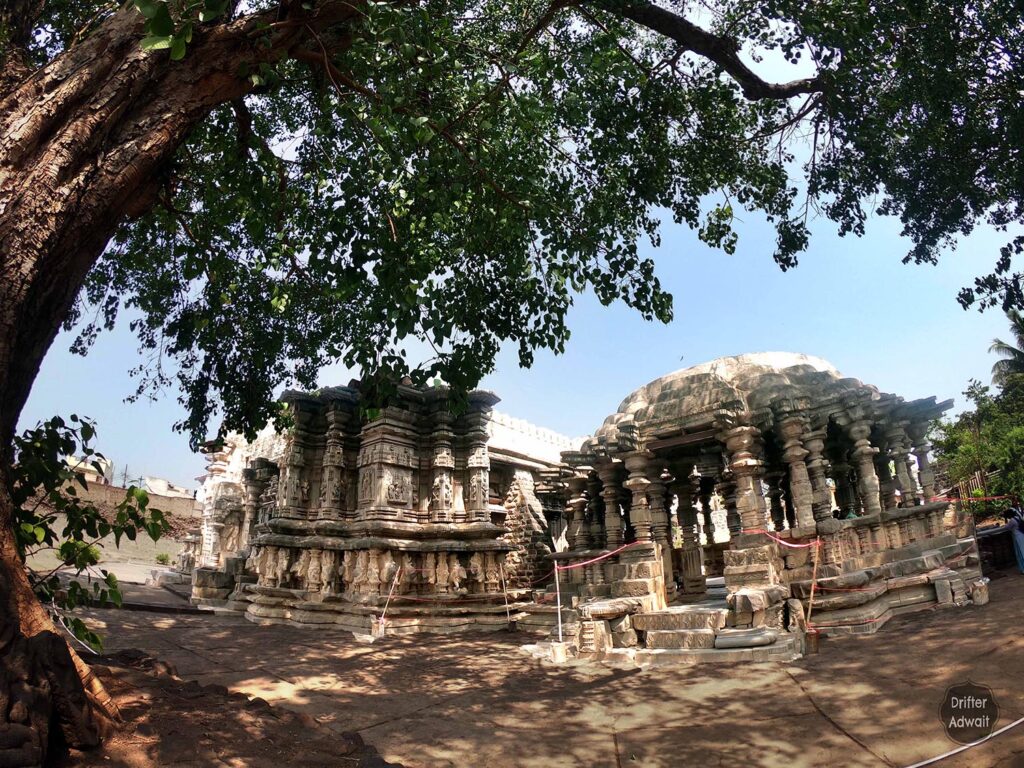
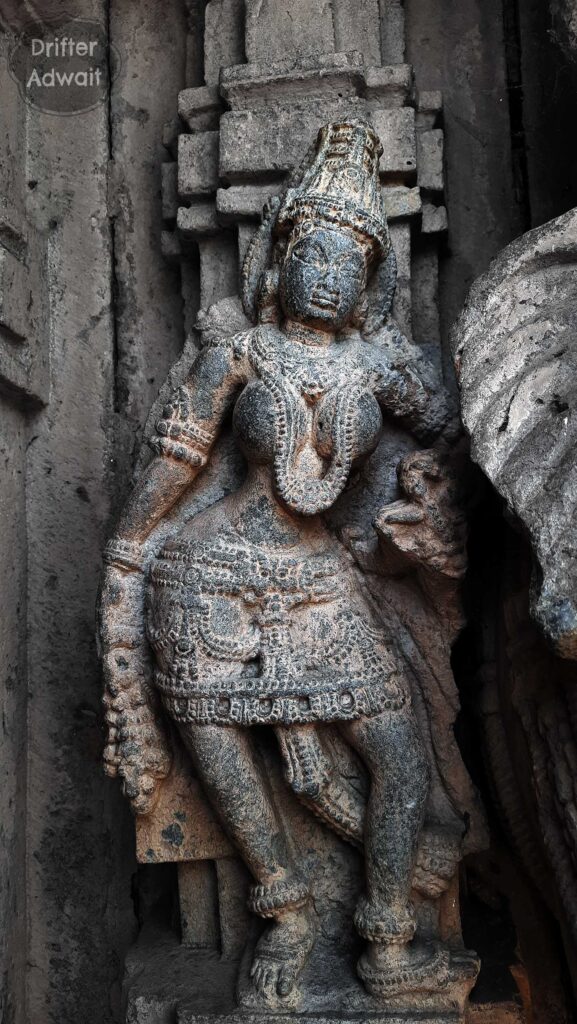
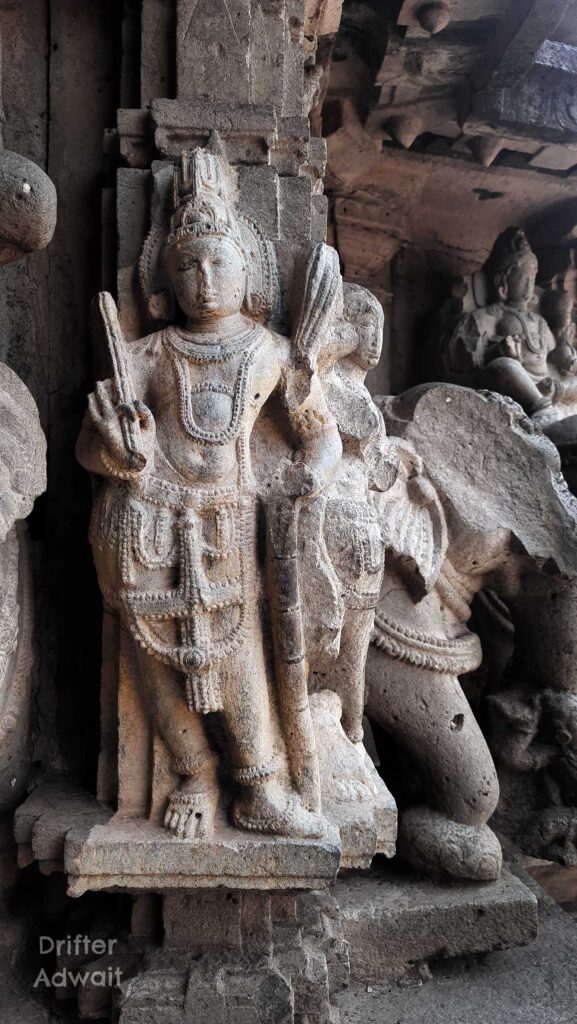

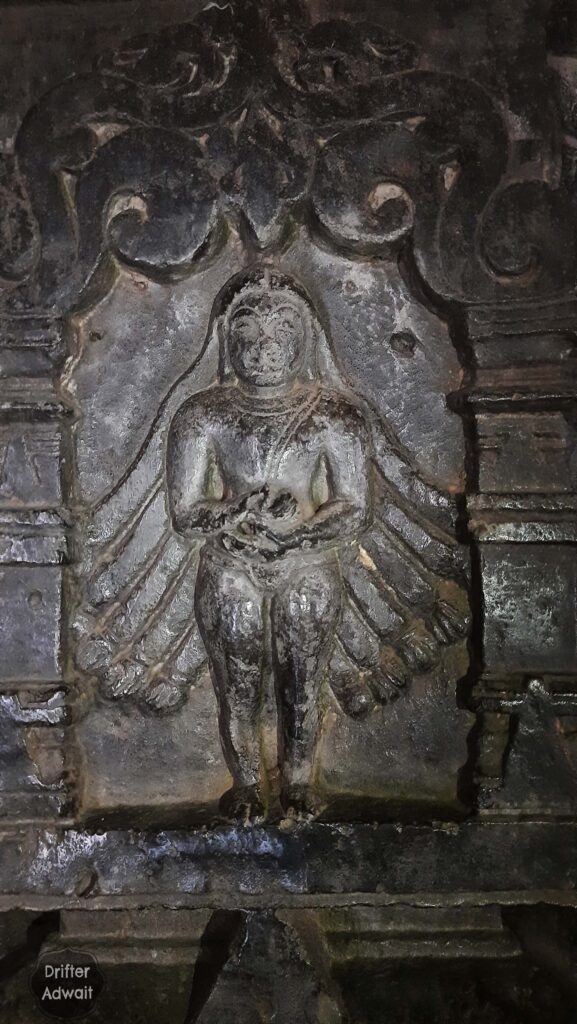
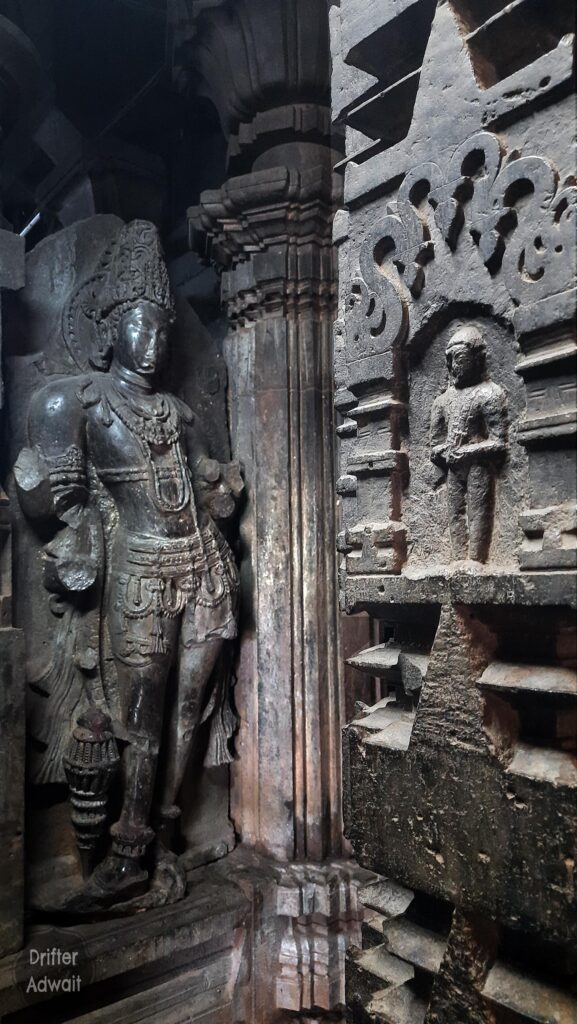

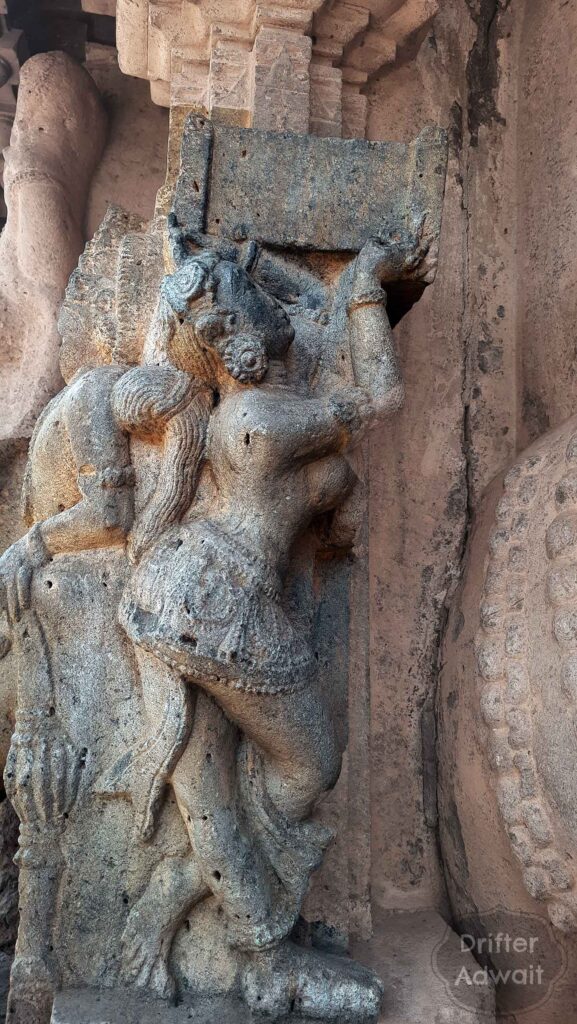
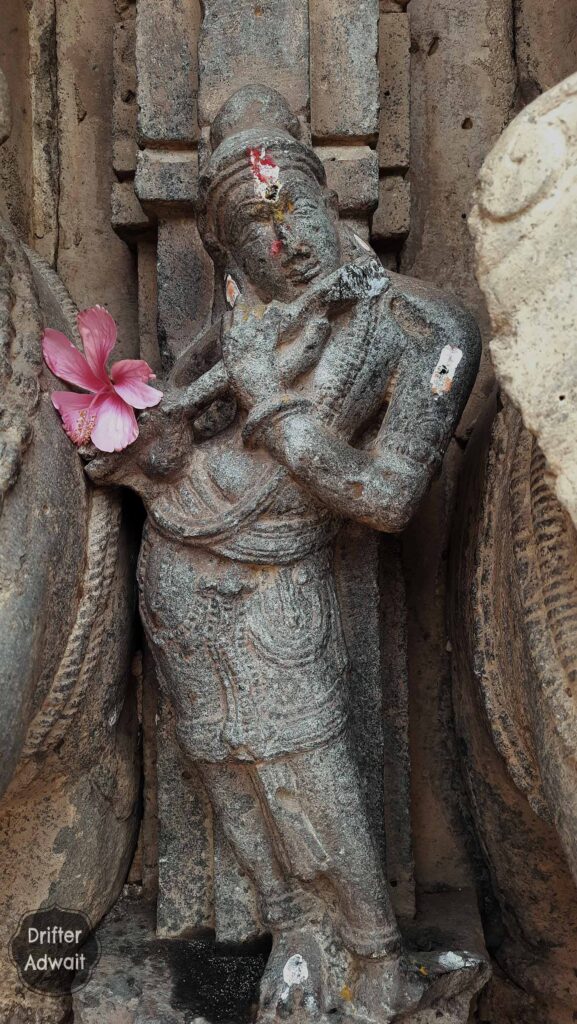
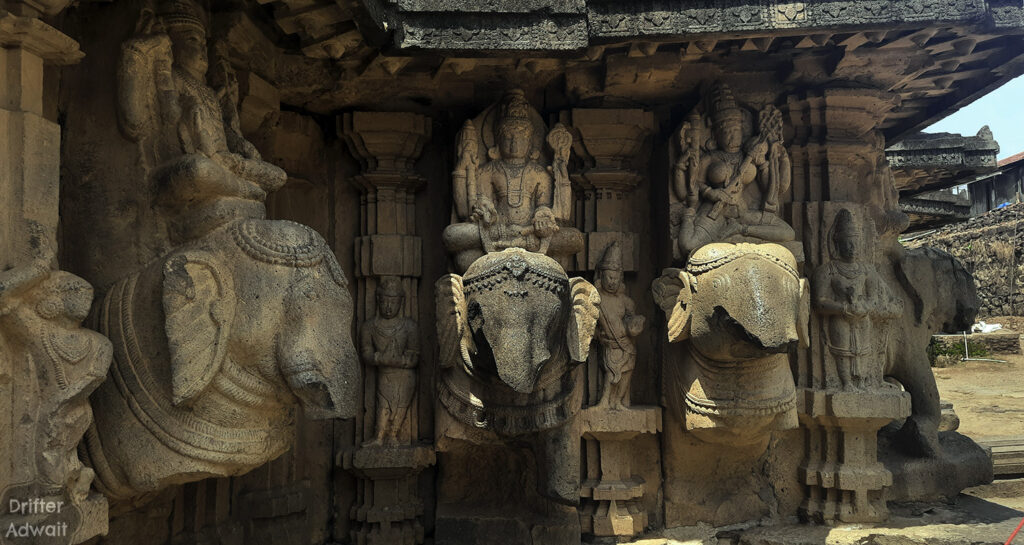
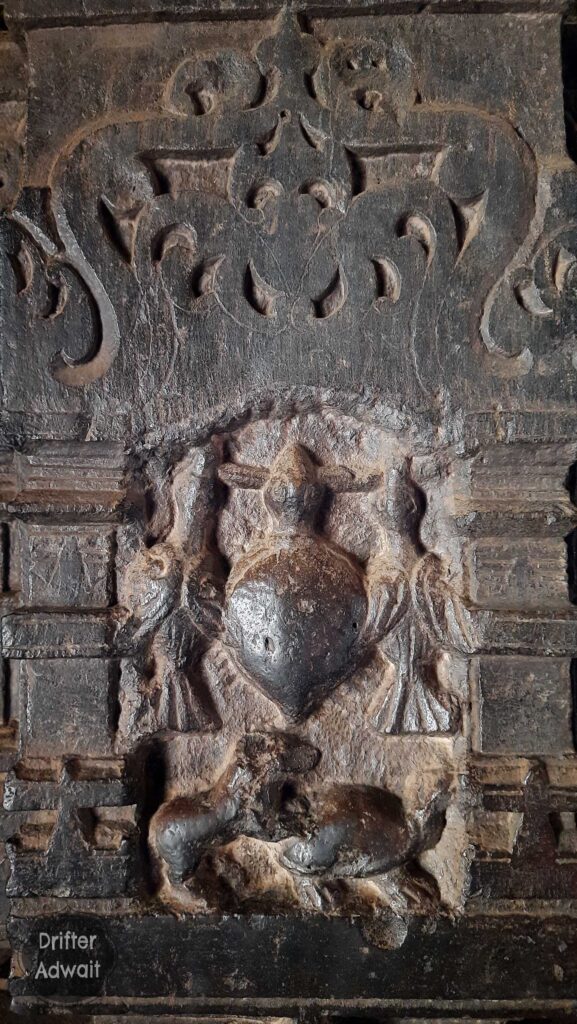

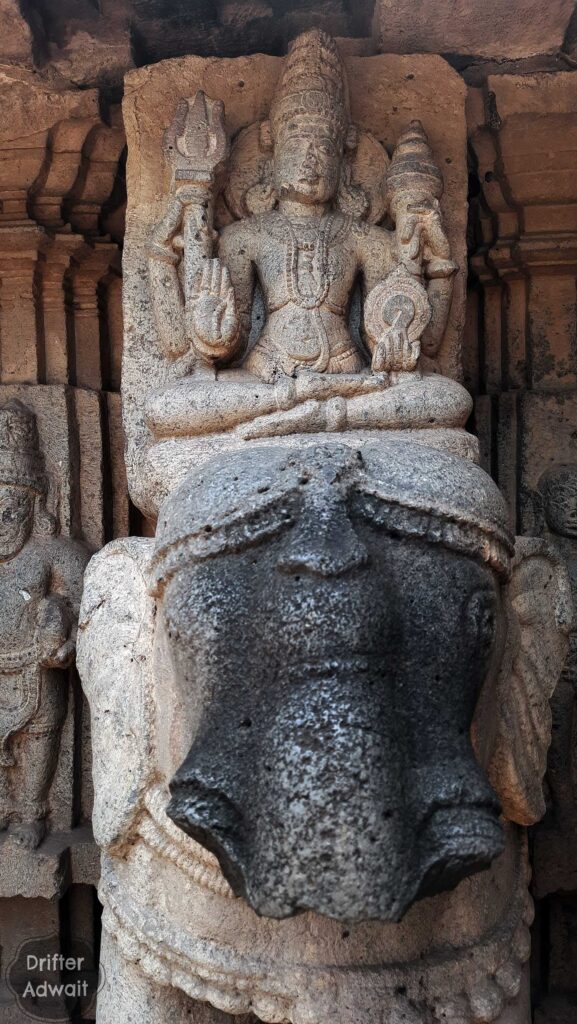

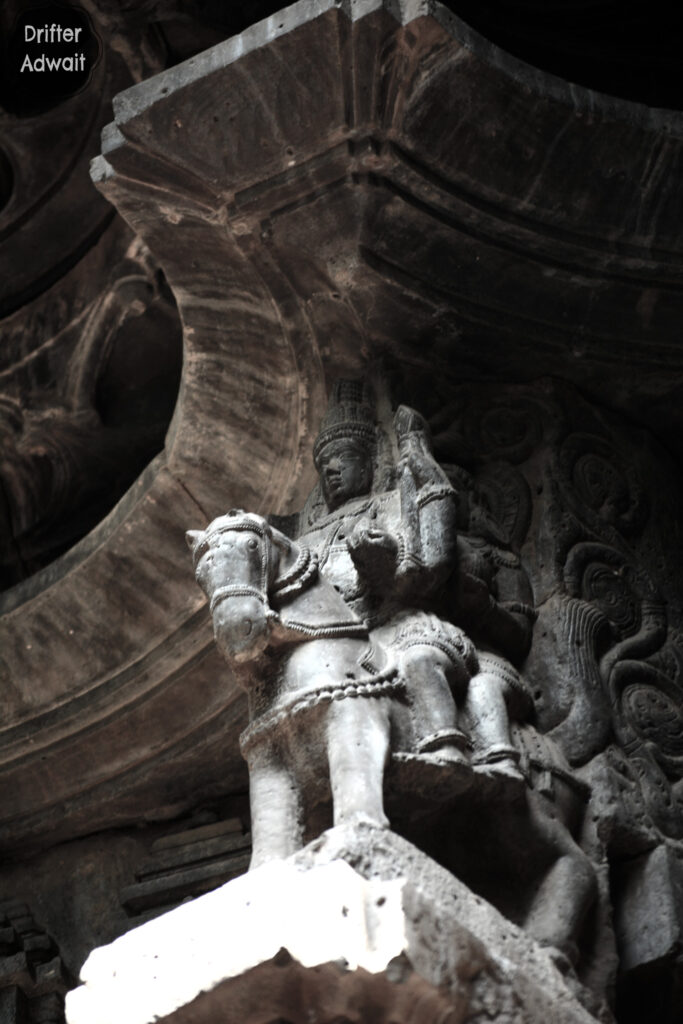
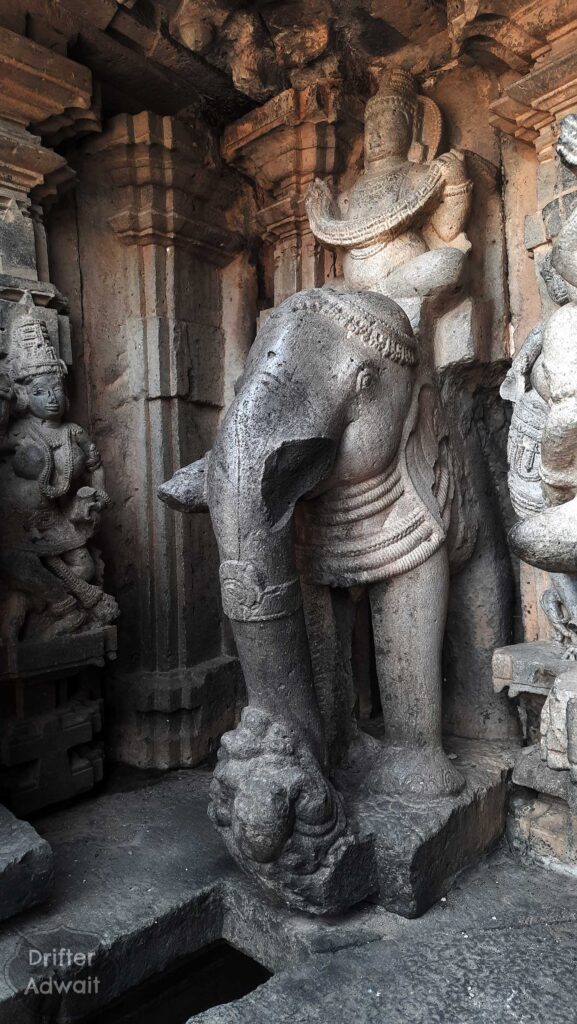
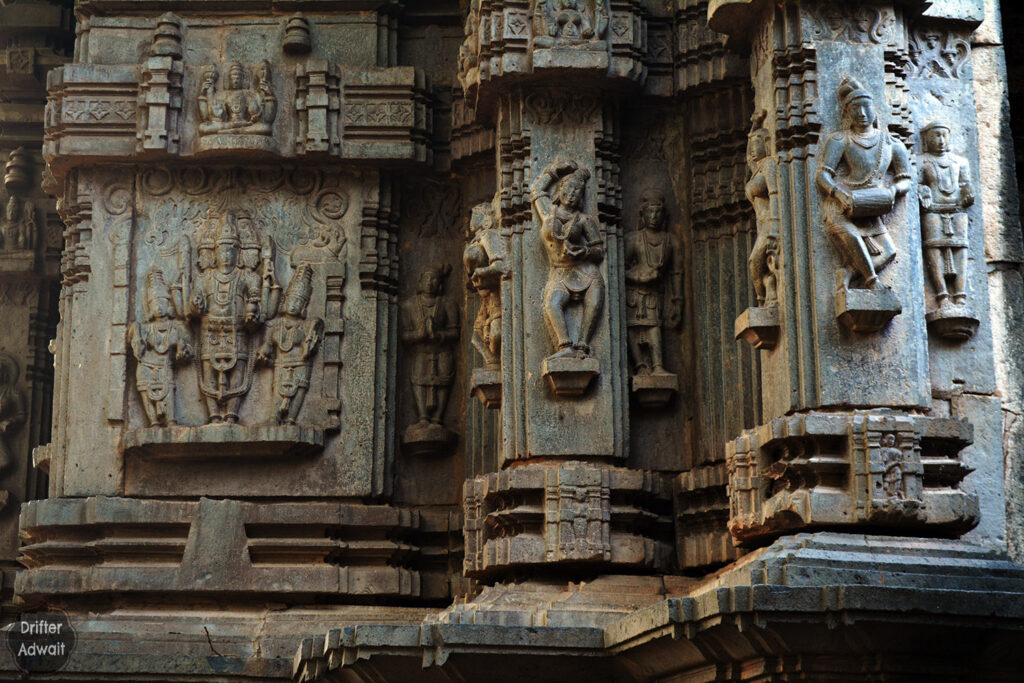

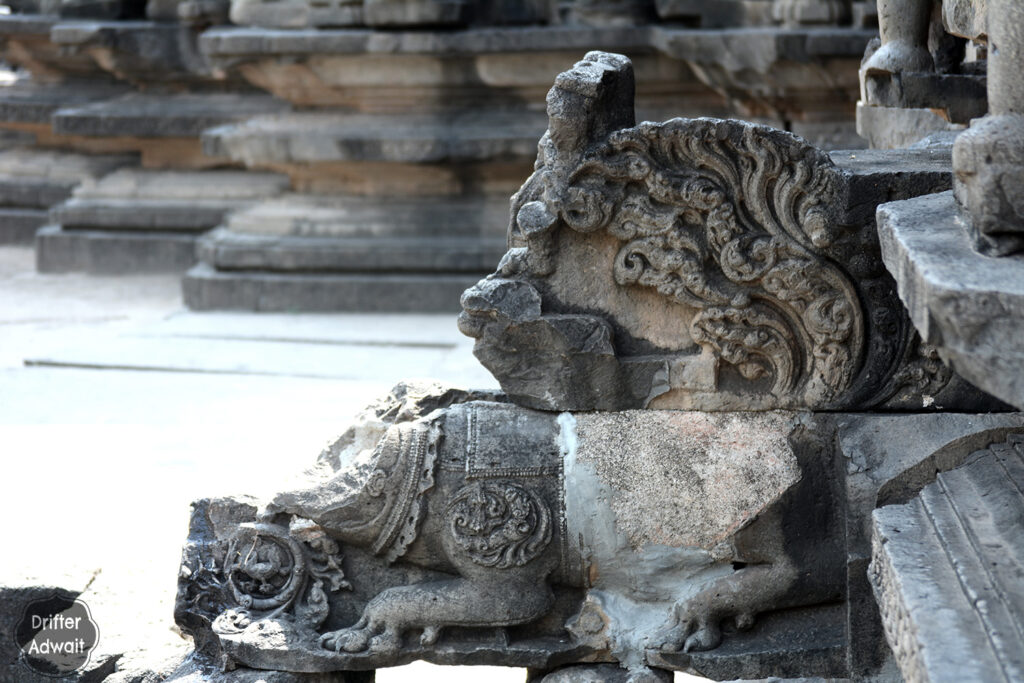
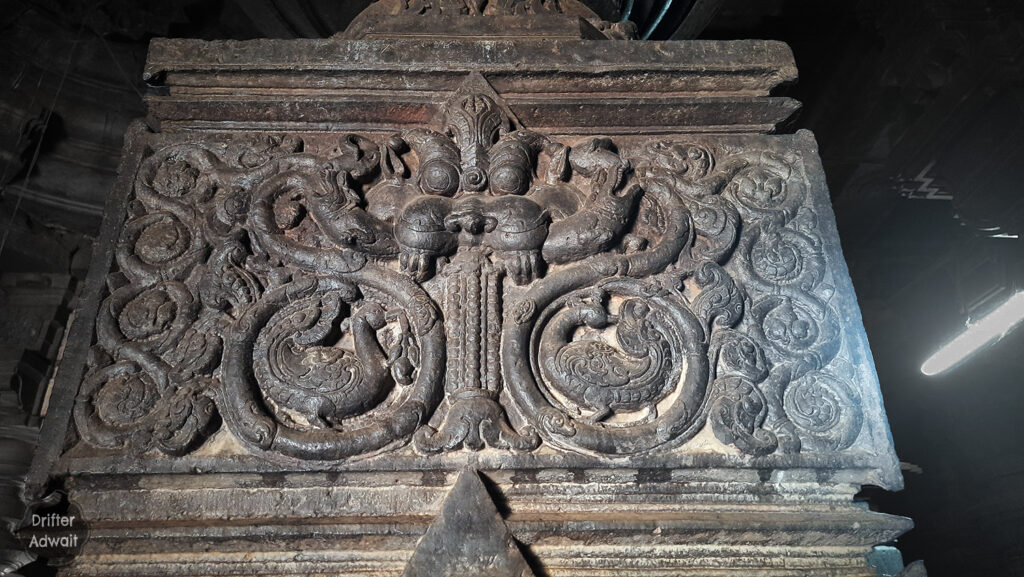
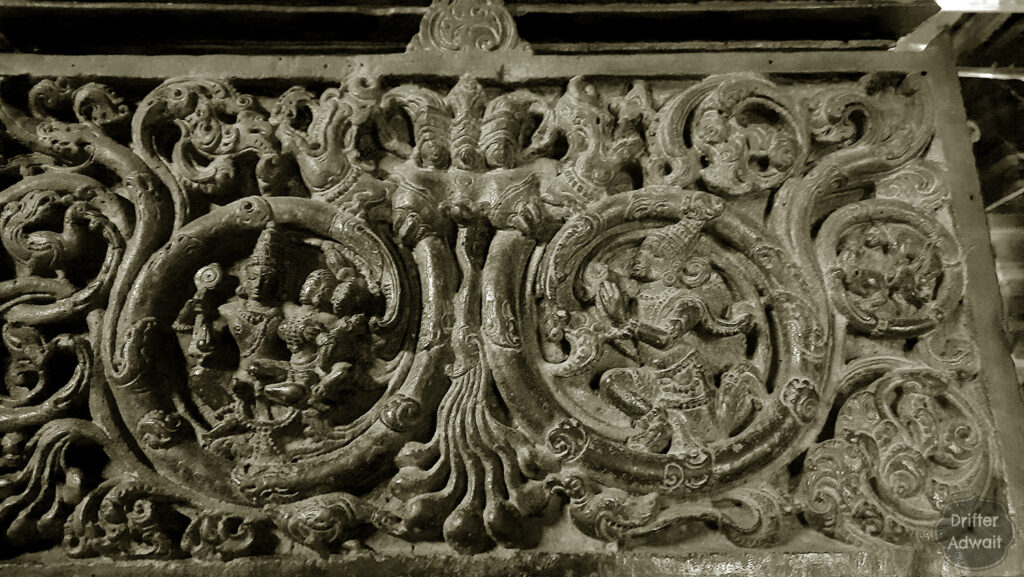
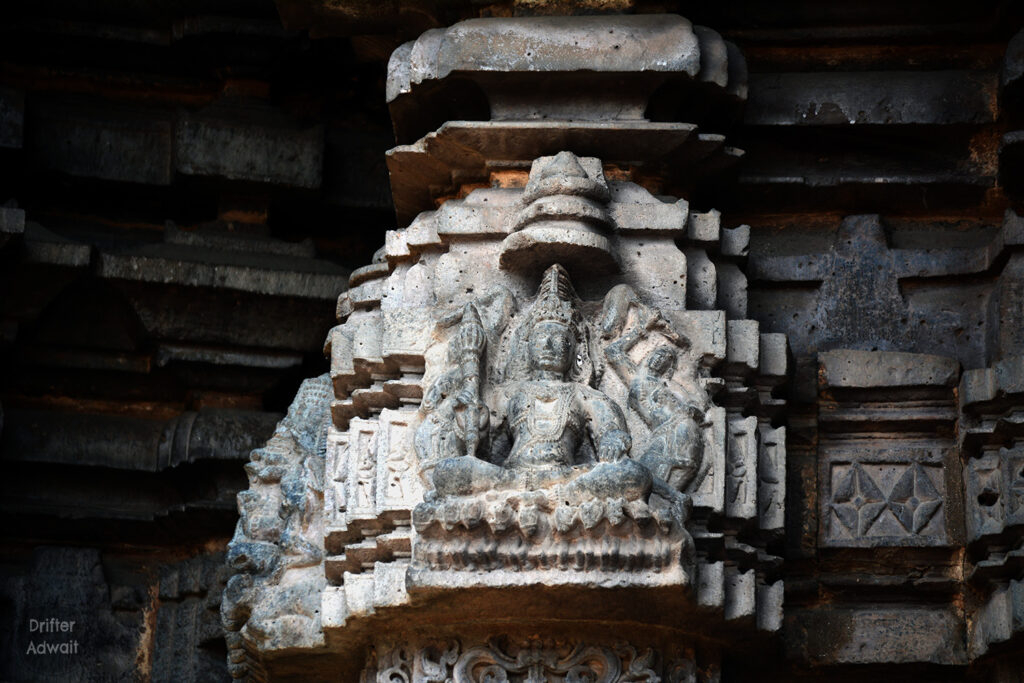
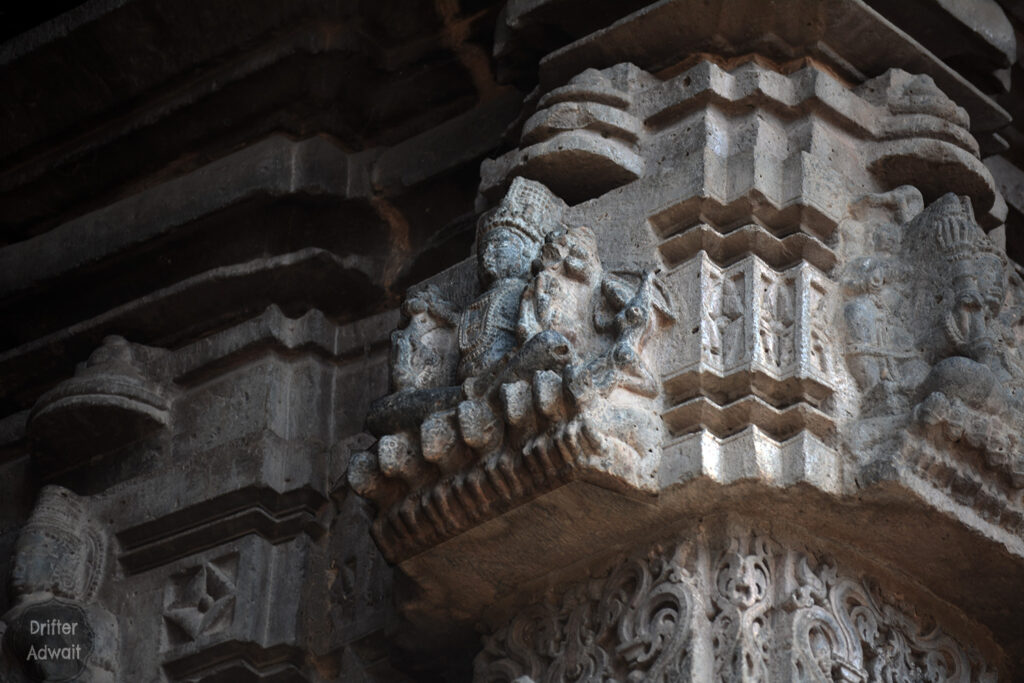
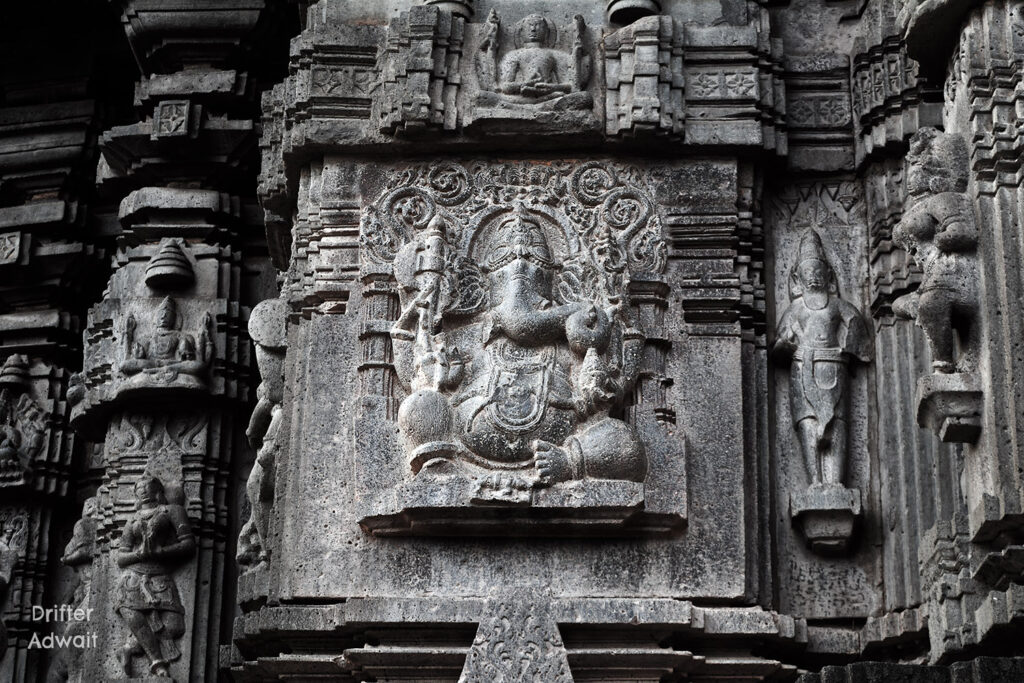
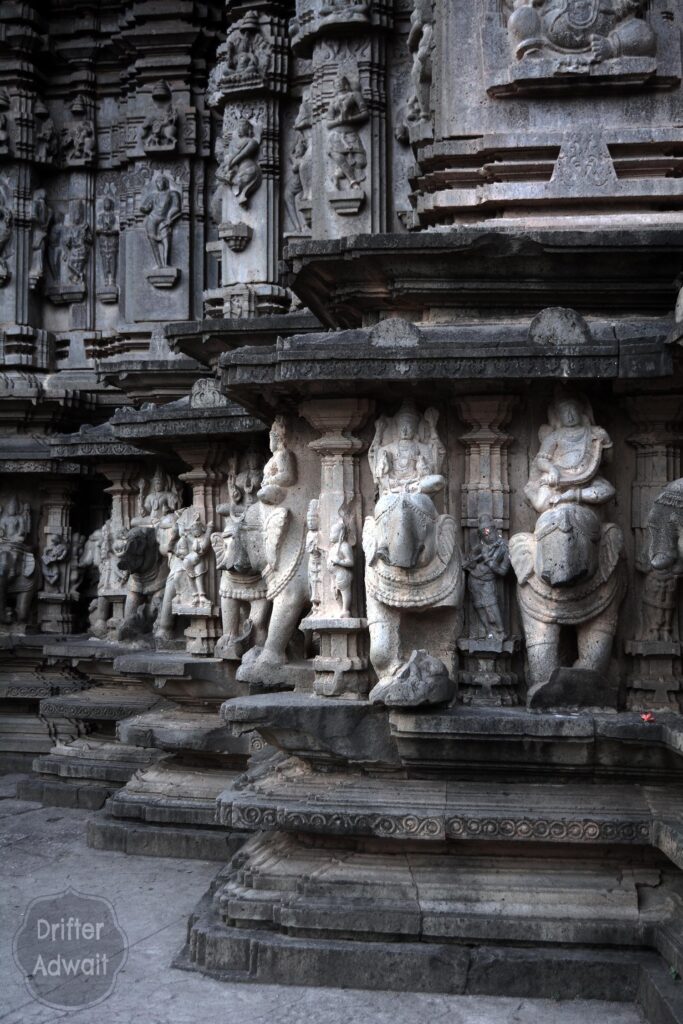
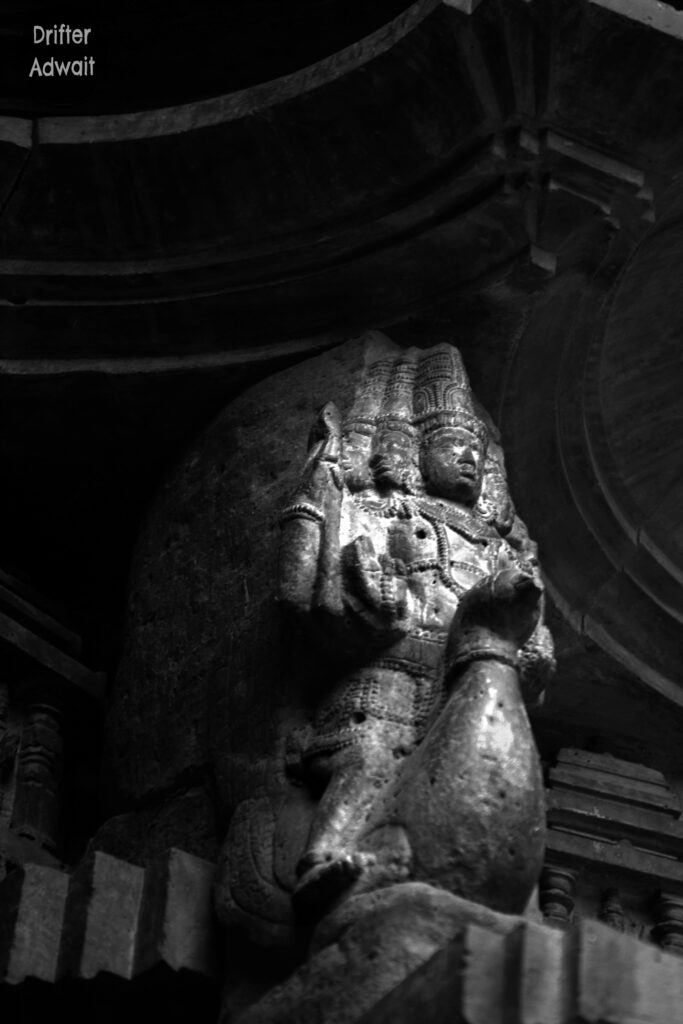
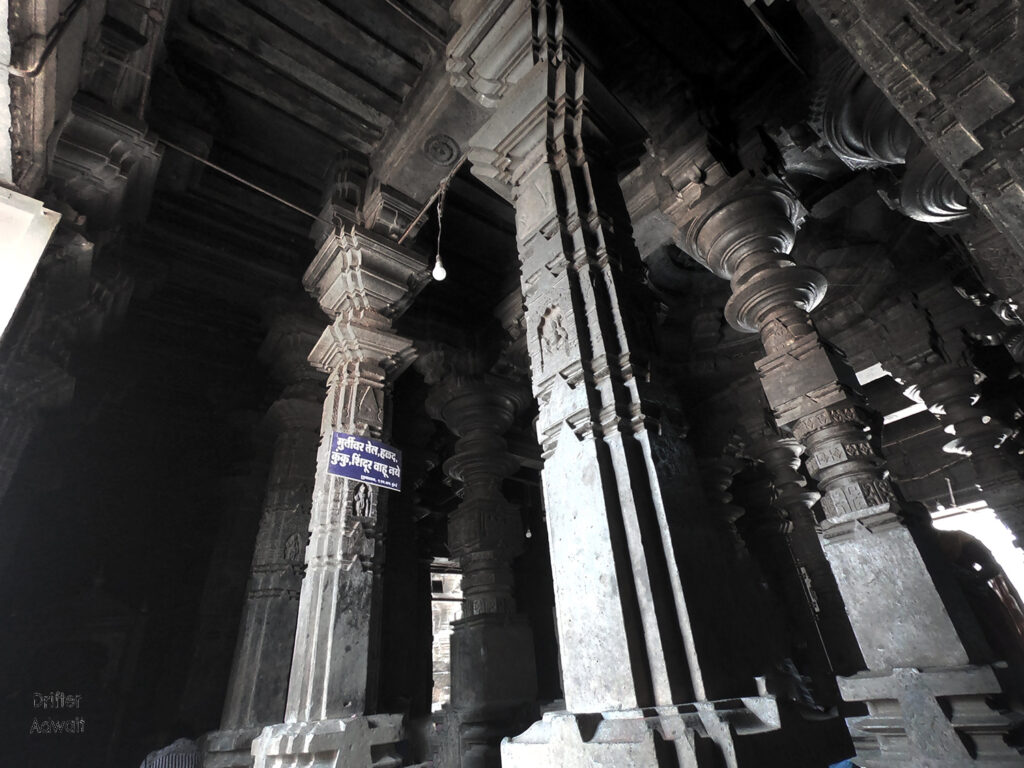
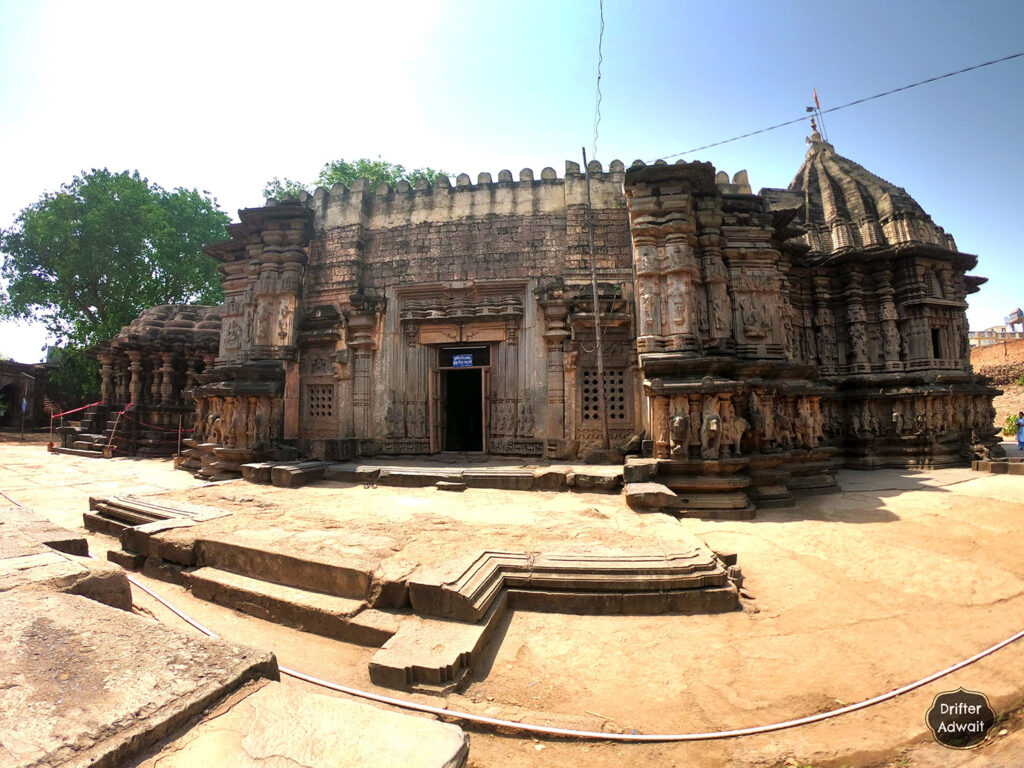
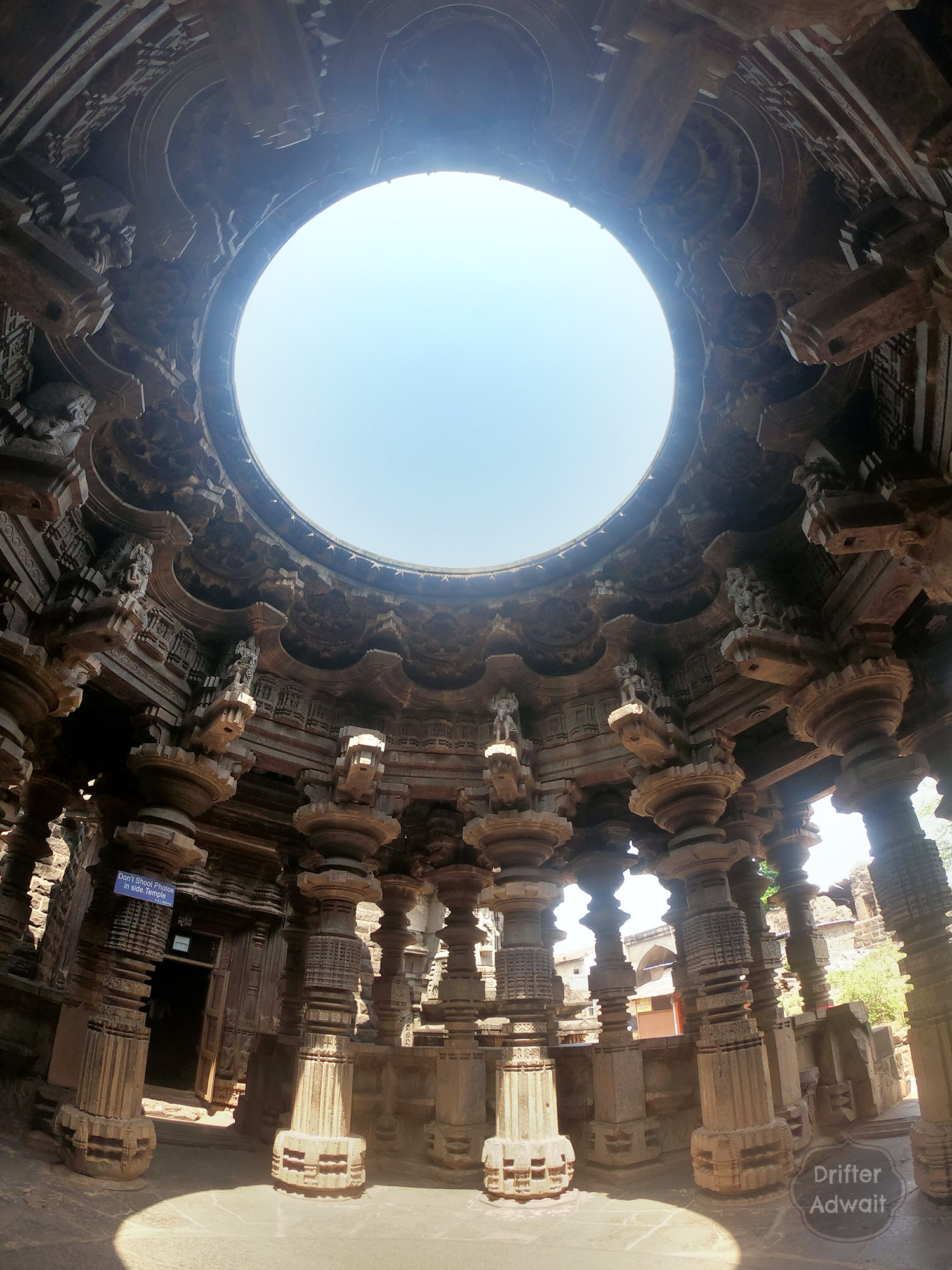
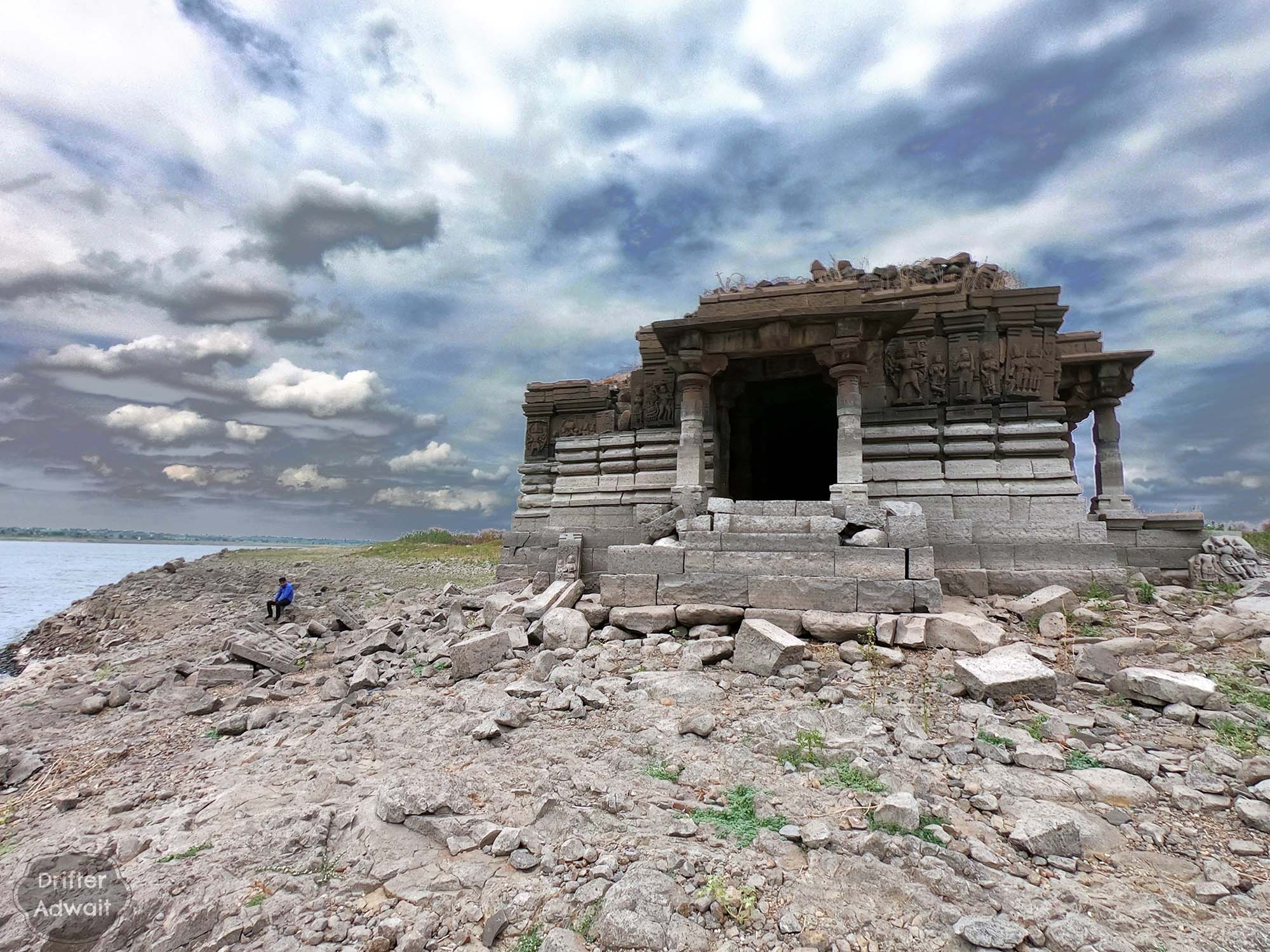
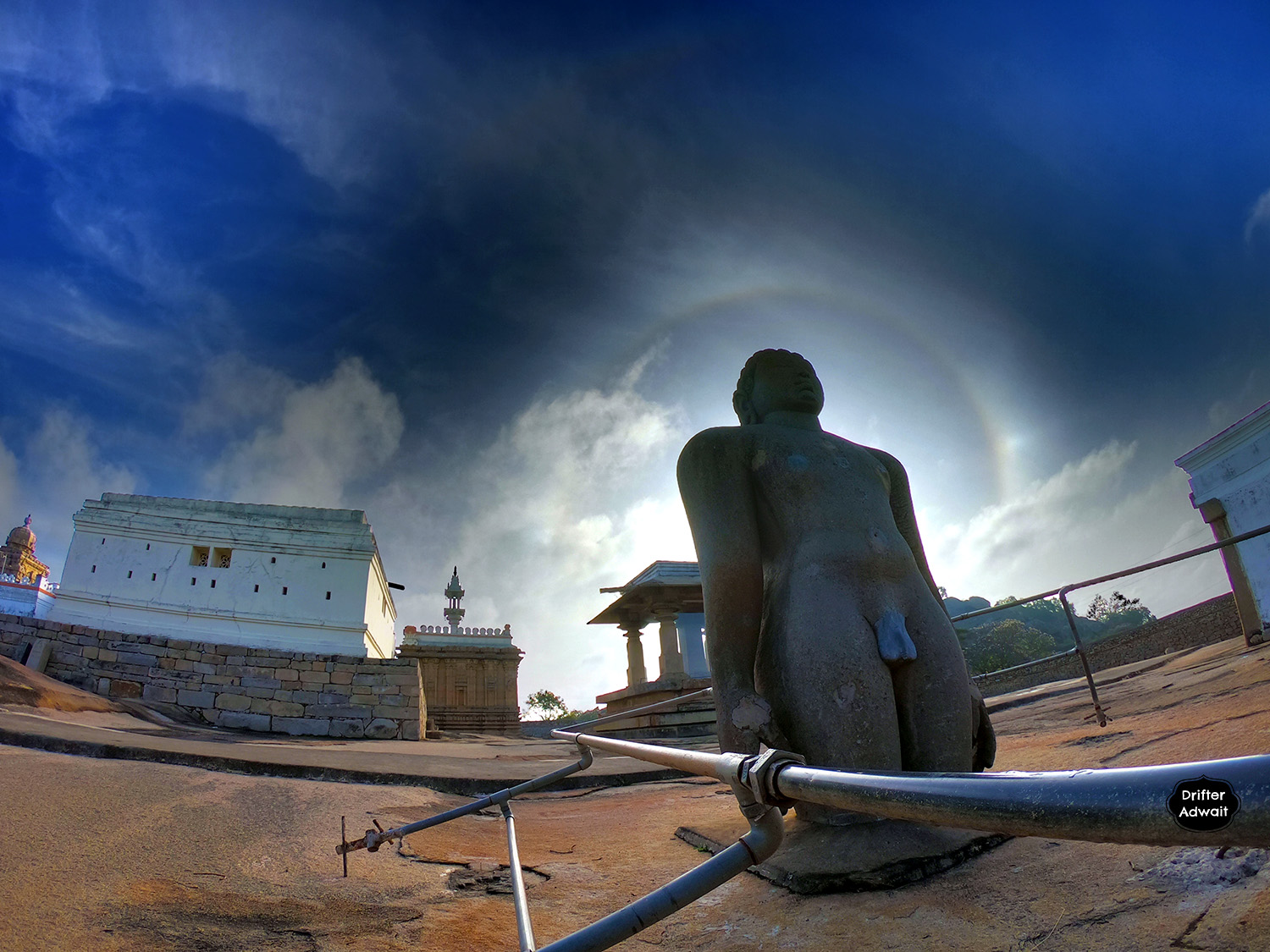
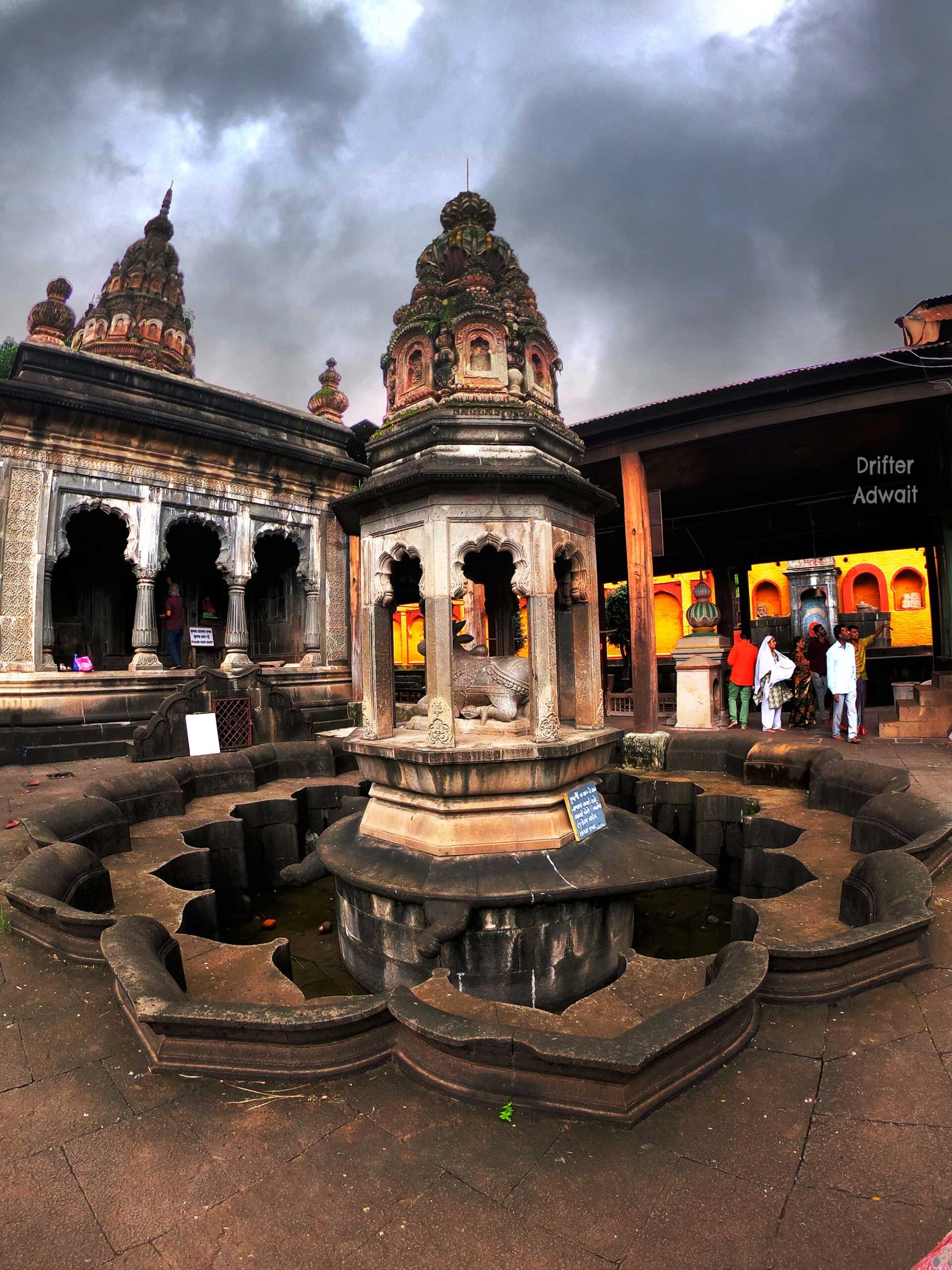
Beautiful photos and write is so good.
Brought back so many memories.
Thank you very much Madhumeeta Ji. I’m delighted to hear that the photos and write-up resonated with you and brought back cherished memories. Visiting the Kopeshwar Temple in Khidrapur is truly an experience filled with spiritual beauty and historical significance.
The circular opening in celing of the swarg mandapa is by desin. It is said on kartik purnima day the moon rays will fall on the circular disk belo. I have not seen but read about it. you may please confirm
The verdict is still pending on whether the Swarga Mandapa initially possessed such a structure. Some scholars have claimed the presence of a water outlet in the mandapa, which is a crucial feature that our knowledgeable temple builders were careful to include. However, if the roof had collapsed, it would not have done so with such intricate precision. While it is true that the moon appears at the center of the Swarga Mandapa, I cannot confirm whether this happens during the auspicious occasion of Kartik Paurnima.
I would like to express my gratitude to you for taking the time to read and comment on the blog. Your interest and engagement are truly appreciated and motivate me to continue sharing my thoughts and ideas about our heritage. Thank you for being a part of this community and for contributing to the discussion.
What is your E Mail address ? the @gmail.com address you have given bounces
Namaste Viswa Ji, Thanks for the comment. You can email me on [email protected].
Going again soon with entire family …let’s keep spreading words about our rich art , architecture, culture, and heritage too.
You know what i think ? Friends of mine like you are assets equally good as these heritage sites ,who keep informing about these charming knowledge of ancestors to the generation, and keep them alive in all sense . ❤️?.
Honestly a tons of thanks on behalf of These unknown sculptor whose hands created them . And you explained them in exact way they thought to be….????❤️❤️
Have a very happy journey to you sir. Thanks to these unkown sculptures, we are able to spread the knowledge of our rich heritage and culture. Happy templing sir.
Its fabulous experience once again . Remind me the memories of my last visit. One point worth mentioning is that it’s dvijangha mandovar is very unique in terms of its height . At the same time Gajthar of vedibandha is larger and was more emphasized than any other layers ,when compared with temples of contemporary dynasties…Nicely explained in lucid language ???
Absolutely stunning masterpiece by our ancient builders. You are absolutely right. The temple is unique in many ways, like Dvijangha Mandowar, giant Gajathar, Sheelabhanjika inside the sanctum Santorum and one of the most beautiful Chandra sheelas I have ever seen. In fact, many of the ladies are holding Mangoes. And by the shape of the fruit, you can actually visualize whether that mango is ripen or raw. Such a brilliance by our ancestors. Thanks for your awesome and encouraging comment as always.